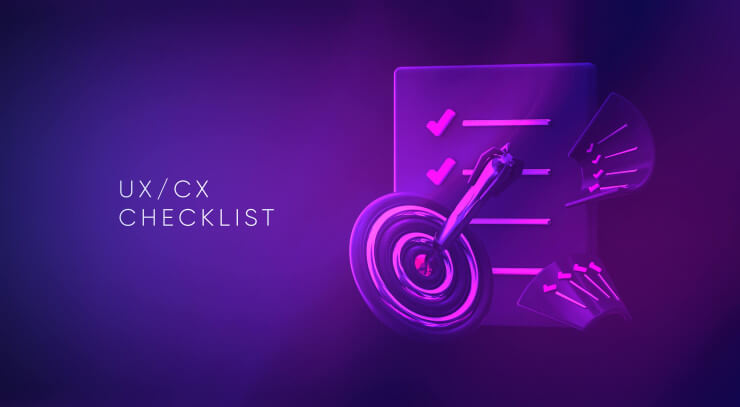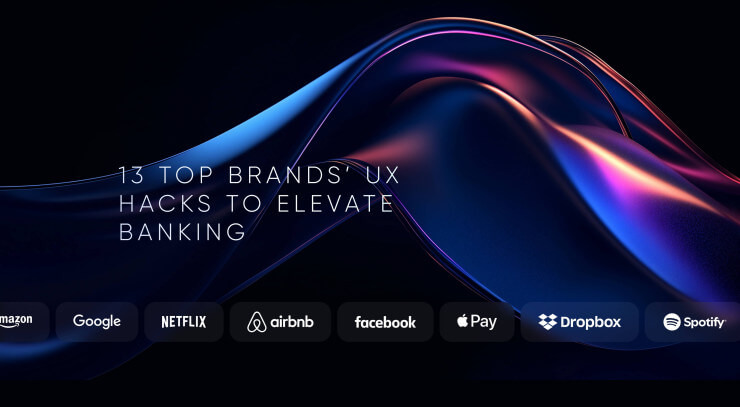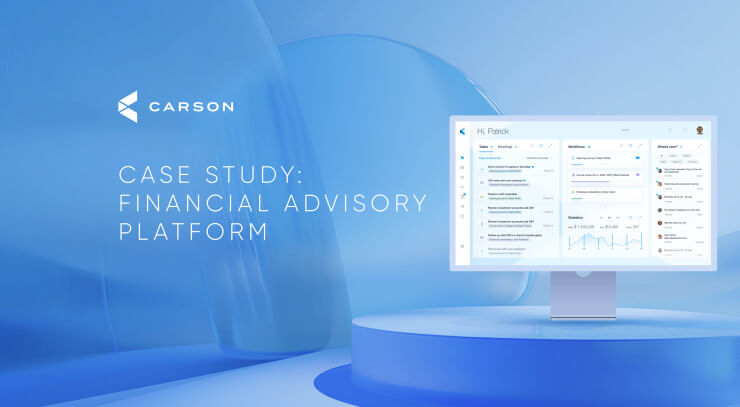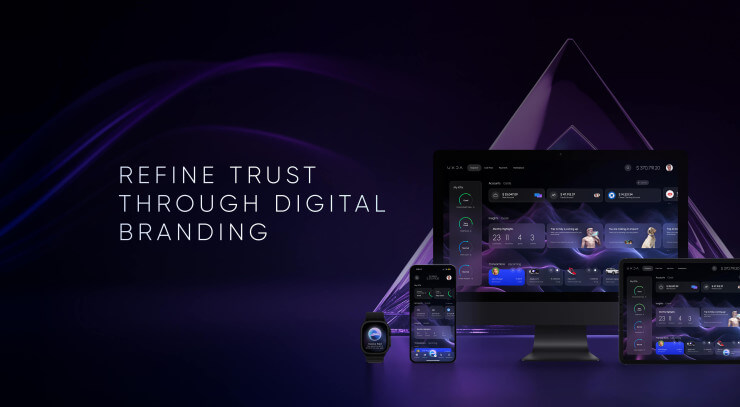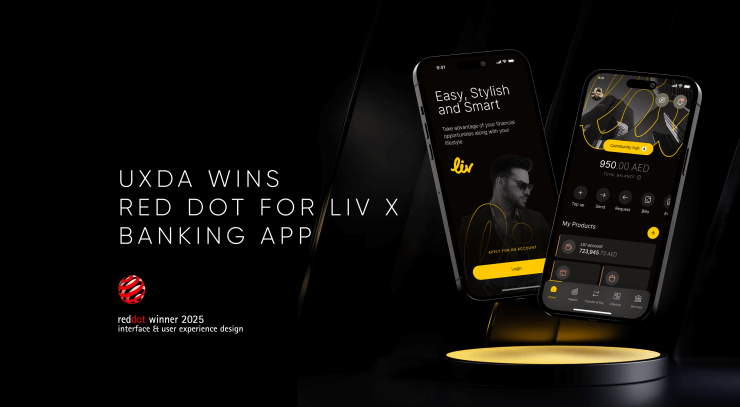Finance digitalisation causes many banks to adjust their approach to the development of their products and services. Today, more and more financial companies evolve by creating user-centered services and simpler and more convenient solutions. But it is not enough for creating the perfect user experience (UX). You also need to consider the barriers across the user journey and Pain Points in your banking information architecture.
Getting to know the market and adapting to their preferences and goals are excellent strategies, but they have some traps and pitfalls. One of the key problems in the traditional approach to creating digital financial products is the orientation to “architect user interactions in a perfect way”.
However, people are different and any problem in the user's experience can completely spoil the whole impression even if the other features are perfect. Addressing pain points will help avoid key problems and minimise their impact.
Where are the Pain Points that ruin perfect information architecture in banking?
Often information architecture in banking relies on a so-called "ideal key person" that is identified during the first stage of digital financial service creation. The problem here is that apart from perfect interaction scenarios, real life also reveals the negative ones.
Another problem is the difference between users’ financial products perception and those of experts and creators. Though top managers at banks and financial services make important decisions on product digital strategy, they can't always see it from the users' viewpoint, so they fail to consider the factors affecting banking UX (user experience). They create products based on their own understanding of service usage and their financial knowledge usually is better than users have.
All companies try to create perfect services that seamlessly address users’ tasks. However, everyone doesn't always use a service in a predictable way due to the age, preferences, occupation, or residence. Therefore, it is necessary to find out, and then use, standard errors patterns.
Why bother with Pain Points and why negative UX outweigh the positive one?
Many banking managers and experts don't see any problems in how products and services work, as in most cases, they work as intended. But perfectly planned scenario for users doesn’t always work.
Despite all the advantages, any problem impeding the performance of a specific task will completely negate the positive aspects and spoil the impression. This psychological perception peculiarity is determined by human brain evolution. After all, our brain had to remember dangerous or threatening situations to survive and avoid them in future.
Several independent researches confirm that the negative aspects of any actions or events outweigh the positive ones in human consciousness. One such research is the work of Nobel laureate Daniel Kahneman, in which he has conducted a number of experiments. For example, the results showed that most people would be upset from losing $100 from a bet rather than be happy to win $150. These events expectancy was equal (50%) but there were fewer volunteers to make a bet.
As far as UX is concerned, what the financial company management and staff may see as an insignificant pain point can be experienced as a large-scale problem by the user. That's very important in the context of the world demographic changes because in the coming years, the primary customer groups of the main financial companies customer groups will be Millennials and Generation Z.
Studies have shown that users tend to quickly switch products and services. This also concerns banks as the competition and the number of Open Banking services increase due to the implementation of the European Directive PSD2.
In addition, customers also actively share their user experience online by reviews on special sites and in social media. As a result, the UX error that banks presume to be insignificant can lead not only to a loss of a particular customer, but also spread negative opinions that can ruin the bank’s reputation.
Examples of user Pain Points damaging digital financial products
Our company often gathers user research and user stories about banking experiences. We are often surprised by the results, as detected pain points can be easily and promptly fixed with minimal costs. Unfortunately, finance institutions managers underestimate the impact of these factors regarding customer loyalty. So we decided to quote the users from our studies of different financial services and publish their feedback.
We want to share the stories on 10 key scenarios in the product use. Of course, your customers also have some of these pain points. We hope our reviews will help you identify potential problems experienced by real users and find a solution.
1. Onboarding
I decided to open my very first Bank account. I carefully studied banks offers and chose the one that promised online registration, without visiting a branch. I filled a long registration form, confirmed my identity by a video call to the Bank. Then it turned out that identity verification needs a payment from another bank account, though I haven't been warned of this. As this was going to be my first bank account, I wasn't able to do to this request. So, I still had to visit a branch.
Mary, 18 years, Mobile App
I moved to a new country to work on a new project. I needed a local Bank account for payroll. I chose the app of a large Bank and downloaded it. Unfortunately, instead of registering via smartphone, the app sent me to the site. Having spent some time on searching the registration form, I finally filled it, but the Bank required to confirm my identity. I had to go to the branch to do this. Then, I was informed that I needed additional documents to open my account as I was non-resident. Needless to say, I didn't have them with me as I wasn't aware of that. It turned out that I spent the entire day in bank with millions of customers and did not help me. Then I downloaded the mobile-only challenger bank, undergo a video registration and got the IBAN salary account in 10 minutes.
Peter, 32 years, Mobile App
Online banking onboarding becomes particularly important in digital era. It can be a productive introduction to a new service, or a challenging obstacle that deters customers. The banks of the future should provide a full digital onboarding. It needs to be fast, intuitive and frictionless. So, banks need to cooperate with regulators to develop onboarding safety requirements fitting modern digital reality.
2. Authentication
I connected the PIN code for a quick authentication instead of a password. The authentication screen displayed the enter box, keypad and exit button. I wanted to go to the preloading screen where the ATM map was and taped on “exit”. It turned out to reset my PIN. Next time I had to do a full authentication process in the app and create new PIN.
Jana, 19 years, Mobile App
I often make mistakes when entering Bank password. From time to time it leads to a situation that the Bank blocks my access. I have to urgently find the time to go to a branch, stand in line and unblock the access to the Internet Bank.
Gabriela, 55 years, Desktop
I use different banking apps. What really annoys me is password changing or reconnecting my Touch ID every few months or after a certain number of enterings.
Thomas, 38 years, Mobile App
In recent years, many banks have focused on the simplification of authorisation. Innovations are constantly emerging in this domain. While it is great, they are often limited by the regulations and rules. Still, it's worth remembering that security also is a very sensitive aspect for financial services users. Therefore, the right balance between security and convenience is necessary here. In any case, the interests of the client should prevail. Log in difficulties or problems shouldn't create obstacles for the customer. After all, no one would go to a restaurant with a locked door.
3. Navigation
I couldn't find the available daily limit for outgoing payments. Imagine my surprise when I phoned bank and I learned that it is in the "Useful information" section and that actually it is a new functionality for online bank. I had a feeling that when this function was added online, it had no other place to be put in.
Jane, 31 years, Desktop
My corporate Internet Bank has transferred to a new version. It has become more like a mobile app. Many functions disappeared, and the ones left were hard to be found. I had to regularly call tech support since it was not clear where to find the needed functions.
Ted, 33 years, Desktop
When you fill in the payment form, the "Next" button is grey, and "Save as template" green. On the next page — the green button is "Confirm" and the grey "Back". In the first step I have pressed "Save as template" instead of "Next" so many times!
Mike, 30 years, Desktop
The navigation displays the informational architecture of a digital service. It should meet the most important users scenarios, and help solve their problems. The navigation should be designed to the users’ perceptions and not to the technical systems' characteristics, the bankers’ ideas, or designers’ imagination. UX methods (card sorting) help expose errors in this domain. Navigation should rely on intuitive information architecture of the banking product, with clear instructions that are easy to use and match their priorities.
4. Balance
Unlike for individuals, the balance quick review function is unavailable for business customers. I have to undergo a minute authorisation every time I want to check the company's account.
Jason, 32 years, Mobile App
While filling in the payment form and choosing the account from which to make the payment, I noticed that three of my accounts have the same account balance - 1,500 EUR. It was significantly less than supposed to be. I immediately contacted the Bank and they explained to me that they do not show the entire balance — only the maximum funds available for transferring.
Teresa, 22, years, Desktop
I filed a leasing request in my Bank branch. When I entered my online Bank I couldn't find the data on my lease status in "My credits" sections. I had to call the Bank to learn my balance.
Zachary, 27 years, Desktop
Knowing a financial balance is one of the most important banking users’ scenarios. There should be no confusion for the user. They shouldn't be confused by the figures of underlying mathematics. Instead, they should be able to easy obtain the clear information on any of their accounts: payroll account, loan balance, or family savings account. The user just wants to know account balance, it isn’t rocket science.
5. Transactions
I had to spent 30 minutes to export 10 payments data from my business account for the tax authority. I have this function available in one click for my personal account in the same Bank. Why business is left out?
Samantha, 34 years, Desktop
The transaction list at my Bank shows older transactions on top, but the last one at the bottom. I have to scroll down the screen every time I want to check the last transaction and that's very annoying.
Rachel, 31 years, Desktop
I can't filter out transactions or use search in the mobile app. So, I have to scroll the list and hope for luck to find the proper transaction.
Sabina, 27 years, Mobile App
Users should be able to fully control their banking experience. It is crucial for them to find a certain transaction and download a payment slip. View transaction history is among the TOP 3 customer scenarios. You can detect main user priorities using Jobs To Be Done approach in banking. Make discovered functions extremely simple and understandable. Users want to filter their transactions to find specific items, view detailed information, report a violation, check payment status, export and save them, etc.
6. Payments
There is a field for amount and "Send" button on the home screen of my mobile app. But I only can use saved receivers to continue payment, I can't choose new one. For a new payment to new receiver I have to choose section "Recipients", add a new one and go to "Payments" to fill in the new payment form.
Lane, 29 years, Mobile App
Me and my friend use the same Bank mobile app, but we couldn't split the bill in a bar, so I had to fill in his data in the payment form standing outside in a freezing cold. Why the Bank can't just sync my contacts so that I can just select his name from the list? I know that other Banks have such option.
Andrew, 22, Mobile App
I tried to transfer money to an account at another Bank. After filling in the form and pressing 'Send' I got the message that my daily limit of transfering money to other banks is exceeded. The Bank didn't even offer me to increase the limit to finish this transfer. I felt small and helpless. As if the limits aren't created for my safety, but for my control.
Marisa, 27 years, Desktop
We are pleased to see that bank payment interfaces are becoming simpler each year. Users hate long forms and complex processes. Anyway, digital payments function should be satisfactory. Otherwise, the digital solution doesn’t improve user experience in banking, but frustrate them. Digital technologies allow us to move complex banking procedures to the background. Challenger Banks and neobanks ar a good example here.
The purpose of payment limits is to ensure the user's security. The user should have online access to a flexible configuration of any financial transaction. In cases when limits prevent users from completing a task, they should be easily and instantly changed. Ultimately, it's the user's money, and banks only help manage it.
7. Feedback
The most annoying thing is when I fill in the entire form of the payment form, press "Send", and it turns out that I don't have enough money on the account. Why couldn't they just show it before I press “Send”?
Julia, 21 years, Mobile App
I recently got a call from disgruntled service provider threatening me with a fine for the unpaid bill. It turned out that my mobile banking showed the confirmation screen when settling the bill payment but the transaction somehow failed.
Nick, 26 years, Mobile App
It's often clear that banking functions don't communicate with users and don't help at critical moments. Any interface should provide sufficient user feedback. It's the only way a user can understand what is going on. It can be done by notifications, messages, and tips. You can apply user flow diagram to banking product that helps to design it. Critical actions such as transactions should be prioritised.
8. Notifications
My app doesn't send me notifications about incoming payment if it is in different currency than my local one. Since I am a freelancer — such transactions are prevailing, so I don't know whether the client paid for my work or not.
Liza, 23 years, Mobile App
My bank does not send me notifications for by business accounts, although I do receive notifications for my personal accounts. I have to authorise in the app ten times a day to validate a business transactions.
Tasha, 30 years, Mobile App
For most users, notifications are an important tool to keep control on their financial activity. Therefore, banks should pay special attention to them. There shouldn't be too many notifications, only relevant ones according to customer journey map that helps to detect critical touch-points while using financial service. Notifications must be set for a wide range of functions. The lack of real-time financial activity monitoring, especially if it has already been implemented by bank for similar functions, frustrate users and deprive them of control.
9. Profile
I wanted to update some information in my profile, but realised that I can't do that because the fields were not editable. I called customer service and found out that some information can be updated only in branch. Why should I bother and spend my time to stand in a line just because Bank doesn't allow me to give necessary information online?
Madalina, 26 years, Desktop
Users can update their personal information in a simple and fast way in many online services. Why should it be complicated with banking services? Maybe it's worth seeing how other services (dealing with similar information) work to get a good idea on improving the user experience.
10. Connectivity
I needed to transfer money to my mom. As I didn't have enough funds in my account, my husband would transfer the money from his account. I had to quickly share my mom's account details with my husband. I could not copy the account number from the transaction history nor copy it from her mobile Bank. I had to find a pen to write it on a paper and then send it in a message.
Anna, 27 years, Mobile App
We live in a time of global social connectivity. We can easily share any information with anyone. Users expect that to be instantly available everywhere. They should be able to easily send each other account numbers and information on the bank's products. They also look forward to sharing online reviews on the bank's services. Integrate a social component in your bank and you'll be surprised how much your service can win from it.
Solution Is in Failure Mapping
As we can see, it's not enough to use the method of key user personas and standard User Journey Map creation for a perfect service. We also recommend the addition of Failure Mapping. It involves conducting UX testing of existing products and services to find possible pain points discovered by users. In case of engineering new service, Failure Mapping should be integrated in User Journey Map. As a result, you will receive a map of the key user experience problems that generates Pain Points.
This will help explain what would happen if a user deviated from a key usage scenarios conceived by the creators, or decided to implement them in an unusual way. Failure Mapping will help identify possible problems and create a solution before ruining the product’s reputation, especially if numerous resources were used for development.
How to Use Failure Mapping
Failure Mapping method involves the identification of product usage scenarios or services causing problems. List of such scenarios should be enough to cover key problems and include maximum personalisation with different combinations of major demographic and personality factors, and the goals of users.
As there will be investigation into possible non-standard ways of product interaction, the designer should not only review all the stages and focusing on the maximum conversion, but also try to understand the thoughts of a user and their intentions. At this point it would be useful to conduct tests with real users. This will help clarify that some aspects of interaction are influenced by the factors that the product developer cannot predict–for example, user actions may be influenced by information from social media or from the online search.
Beside experiments, you can use available statistics data (conversions, churn, etc.), and satisfaction metrics like NPS, Customer Experience Index (CxPI), or the American Customer Satisfaction Index (ACSI). This will help better understand the user's dissatisfaction.
Bear in mind that searching for design errors that irritate users is a constant process. The mission is not accomplished after making a Failure Map. Periodically, it's helpful to conduct an audit to identify any new problems that may occur in the development of the service from user perspective, and then eliminate them beforehand.
Conclusion
Searching and eliminating user pain points is one of the most important tasks of the financial user experience. Technological development and world demographic changes influence companies to shift from making products for the "perfect scenario" to a more profound focus on real problems.
Being in the users’ shoes and finding pain points in products and services will be a crucial competitive advantage. Companies recognising this issue will take a leading position in the future financial market.
Get UXDA Research-Based White Paper "How to Win the Hearts of Digital Customers":
 If you want to create next-gen financial products to receive an exceptional competitive advantage in the digital age, contact us! With the power of financial UX design, we can help you turn your business into a beloved financial brand with a strong emotional connection with your clients, resulting in success, demand, and long-term customer loyalty.
If you want to create next-gen financial products to receive an exceptional competitive advantage in the digital age, contact us! With the power of financial UX design, we can help you turn your business into a beloved financial brand with a strong emotional connection with your clients, resulting in success, demand, and long-term customer loyalty.
- E-mail us at info@theuxda.com
- Chat with us in Whatsapp
- Send a direct message to UXDA's CEO Alex Kreger on Linkedin







